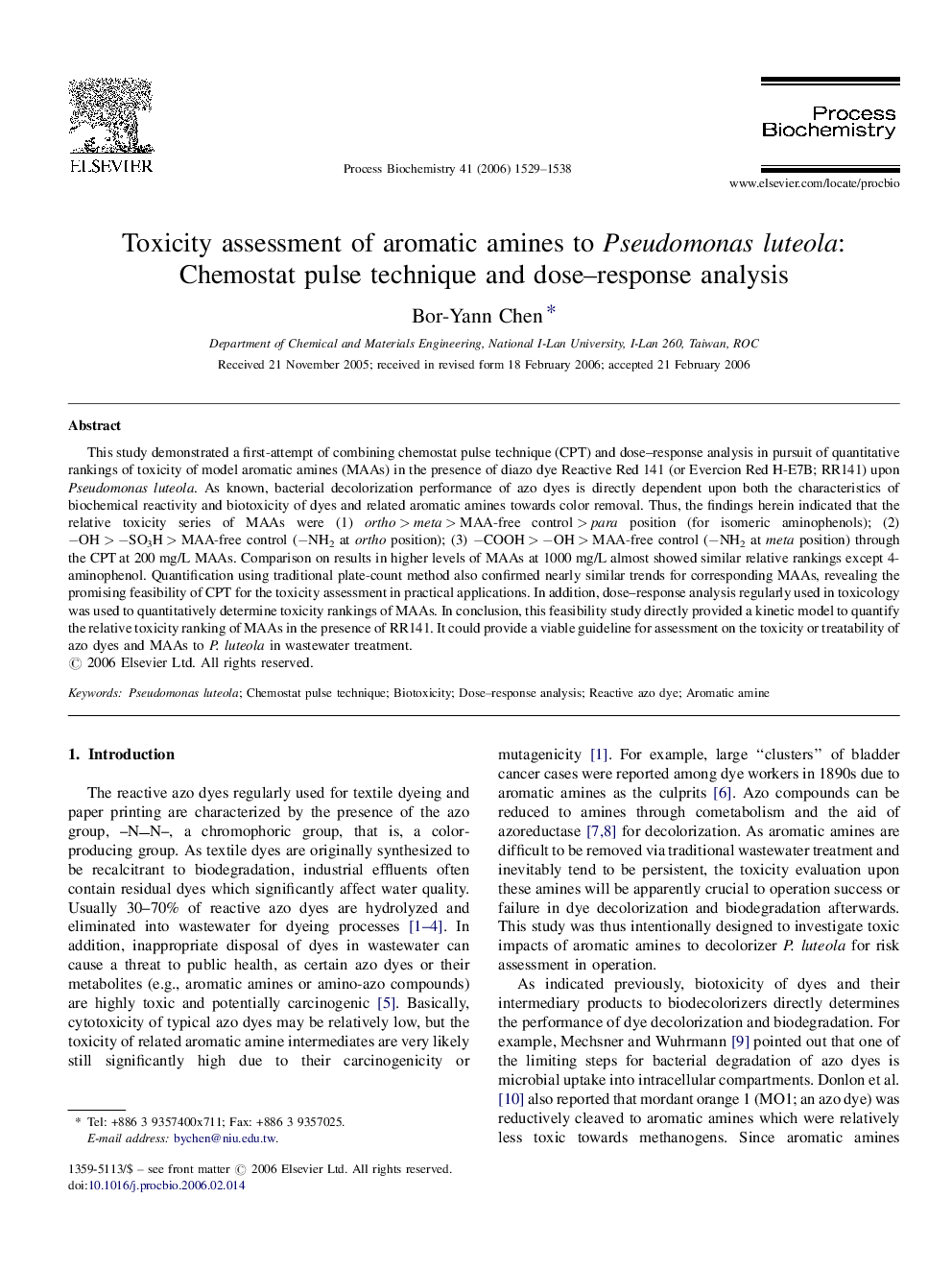| Article ID | Journal | Published Year | Pages | File Type |
|---|---|---|---|---|
| 36412 | Process Biochemistry | 2006 | 10 Pages |
This study demonstrated a first-attempt of combining chemostat pulse technique (CPT) and dose–response analysis in pursuit of quantitative rankings of toxicity of model aromatic amines (MAAs) in the presence of diazo dye Reactive Red 141 (or Evercion Red H-E7B; RR141) upon Pseudomonas luteola. As known, bacterial decolorization performance of azo dyes is directly dependent upon both the characteristics of biochemical reactivity and biotoxicity of dyes and related aromatic amines towards color removal. Thus, the findings herein indicated that the relative toxicity series of MAAs were (1) ortho > meta > MAA-free control > para position (for isomeric aminophenols); (2) −OH > −SO3H > MAA-free control (−NH2 at ortho position); (3) −COOH > −OH > MAA-free control (−NH2 at meta position) through the CPT at 200 mg/L MAAs. Comparison on results in higher levels of MAAs at 1000 mg/L almost showed similar relative rankings except 4-aminophenol. Quantification using traditional plate-count method also confirmed nearly similar trends for corresponding MAAs, revealing the promising feasibility of CPT for the toxicity assessment in practical applications. In addition, dose–response analysis regularly used in toxicology was used to quantitatively determine toxicity rankings of MAAs. In conclusion, this feasibility study directly provided a kinetic model to quantify the relative toxicity ranking of MAAs in the presence of RR141. It could provide a viable guideline for assessment on the toxicity or treatability of azo dyes and MAAs to P. luteola in wastewater treatment.
